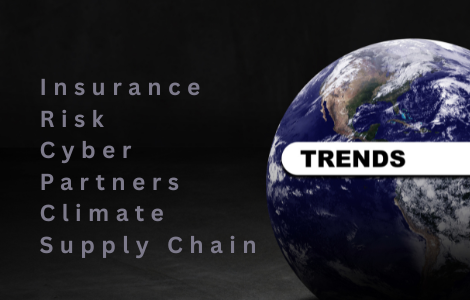The business landscape is changing quickly, and so is the world of commercial insurance. In 2026, many of the same forces that have shaped the last few years inflation, technology, and regulation will continue to influence how companies manage risk and purchase coverage.
At our agency, we stay ahead of these shifts so our clients can make informed decisions and protect their operations effectively. Here are the key commercial insurance trends to watch in 2026.
1. Continued Premium Pressure from Inflation
Although inflation has slowed, its effects are still being felt across the insurance industry. Construction costs, labor shortages, and replacement expenses remain high. This affects property, equipment, and liability rates as insurers adjust to higher claim payouts.
What this means for you: Review property values and replacement cost estimates carefully. Make sure your coverage limits reflect current rebuilding and repair costs so that you are fully protected if a loss occurs.
2. Stricter Underwriting Standards
Carriers are becoming more selective in every line of business. Companies with a history of safety violations, poor claims records, or incomplete documentation may face higher premiums or limited options.
What this means for you: Maintain accurate records, adopt clear safety protocols, and provide loss-control documentation early. Working with an experienced agent helps you present your business in the best possible light to underwriters.
3. Cyber Insurance Becomes Essential
Cyberattacks and data breaches continue to grow in frequency and sophistication. Many insurers are now requiring specific cybersecurity measures as a condition for offering or renewing coverage.
What this means for you: Implement strong password management, multi-factor authentication, and employee awareness training. Review your cyber insurance limits and ensure your policy includes coverage for ransomware, data recovery, and business interruption.
4. Rise of AI and Automation Risks
Artificial intelligence is improving efficiency across industries, but it is also introducing new risks. Errors from automated systems, data misuse, or algorithmic bias may lead to liability claims.
What this means for you: If your business uses automation or AI tools, verify that your professional liability policy covers technology-related exposures. Ask your agent about new endorsements or coverages designed for emerging tech.
5. Climate and Catastrophe Exposure
Severe weather events, wildfires, and flooding continue to affect both property values and insurance markets. In many regions, reinsurance costs have increased, and insurers are tightening capacity.
What this means for you: Evaluate your business location and its exposure to natural hazards. Consider risk-mitigation steps such as fire suppression systems, improved drainage, and disaster planning.
6. Growth of Parametric and Specialty Coverages
More businesses are exploring innovative insurance solutions such as parametric policies, which pay out based on a specific event like rainfall or earthquake magnitude. These products can fill gaps where traditional coverage may be limited.
What this means for you: If your business depends on weather conditions or specific performance triggers, parametric coverage may offer a faster and more predictable payout structure.
7. Renewed Focus on Employee Well-Being and Benefits
Employee health, retention, and productivity remain key business priorities. Insurers are responding with expanded coverage for wellness programs, mental health resources, and flexible benefits.
What this means for you: Review your employee benefits program regularly and look for plans that support physical and mental health. A healthier workforce often leads to lower workers compensation and healthcare costs over time.
8. Greater Use of Data Analytics in Risk Assessment
Insurers are leveraging data more aggressively than ever to assess risk and set pricing. Real-time telematics, building sensors, and predictive analytics allow for more personalized premiums and proactive risk management.
What this means for you: Work with an agent who can help interpret data trends and communicate your safety practices clearly to insurers. Transparent reporting can lead to better rates and stronger partnerships.
9. Rising Demand for Environmental and ESG Coverage
Companies are facing growing scrutiny regarding environmental, social, and governance performance. Insurance carriers are offering specialized coverage for pollution liability, renewable energy projects, and green-building initiatives.
What this means for you: If sustainability is part of your brand or operations, review your coverage for environmental exposures and compliance risks.
10. Collaboration Between Brokers and Clients
With so many changes in the marketplace, the partnership between business owners and insurance advisors is more valuable than ever. Businesses that work closely with their brokers tend to achieve better results in both pricing and coverage.
What this means for you: Communicate openly with your agent throughout the year, not just at renewal. Share updates about new equipment, projects, or locations so your policy stays aligned with your needs.
Commercial insurance in 2026 will demand attention, strategy, and expert guidance. Rates may continue to rise in some sectors, but businesses that invest in safety, cybersecurity, and proactive planning can still manage their costs effectively.
Our agency is here to help you stay informed, identify gaps, and navigate an evolving market with confidence. Whether you operate a small local business or a multi-state company, we’ll make sure your protection keeps pace with your growth.











